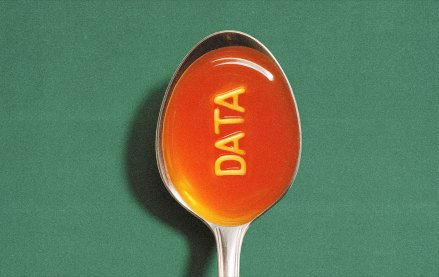Save 50% on a 3-month Digiday+ membership. Ends Dec 12.
AI royalties for small and midsize publishers: collective licensing’s next big play

AI royalties are finally on the table for small and midsize publishers.
Don’t credit OpenAI’s ChatGPT, credit corporate LLMs — enterprise RAG is what’s creating royalty revenue for publishers.
RAG — retrieval augmented generation — kicks in when a user (or system) prompts the LLM, which then pulls the relevant content from various sources to deliver the best answer.
Take Dow Jones’ Factiva, which now operates an AI-licensed content marketplace for enterprises. Over the last two years, it has been quietly expanding its licensing agreements for generative AI usage, with approximately 5,000 publishers from its 30,000-strong publisher network now opted in for this.
That was a lengthy undertaking, but one that is setting the unit up as an effective negotiator of AI licensing rights, to unlock royalties for small and mid-size publishers on a usage basis, according to Factiva’s general manager Emma O’Brian, who was hired in the role in August.
Of course, Dow Jones is also home to The Wall Street Journal (both under parent News Corp), a fact O’Brian stressed is critical in knowing how to negotiate the best terms on behalf of other publishers. “We would never sign a [AI licensing] deal we wouldn’t ourselves sign,” she said.
That partly means upfront conversations with enterprise clients around how exactly they plan to use the content once it’s been RAG’ed, to ensure there is no future risk of data leakage, and how many people will be using it.
For example, a client would need to specify if they plan to use the content for their internal workforce’s needs, or if they want to use it to generate a research report — a separate use case. Then the Factiva team will work with the tech departments or data ingest departments of its corporate clients once publishers are onboarded to see how it works in practice and check that there are no risks of data leaks. The team will then check back periodically to ensure they’re upholding their side of the contract, according to O’Brian.
Factiva has a usage API to ensure that any usage is attributable and that it can ensure its publishers are paid accurately (on a per usage basis per RAG query), she added.
One of O’Brian’s priorities is to ensure specialist, niche B2B media companies are also getting royalties, not just the larger ones, and that Factiva is providing the kind of specialist content needed for specific industries — rather than aiming for more general use.
“I don’t want to call it a moat, but when you think about garbage in garbage out [noisy scraped data] to broadly scraping models versus the gold ore that we have in trusted, reliable content to allow businesses to RAG against, that’s a huge opportunity,” said O’Brian. “And that’s something that can’t be scraped, it has to be ring fenced.”
Eye to the future: Factiva’s role as negotiator with consumer LLMs
With thousands of publishers under license and direct relationships across its network, Factiva is uniquely positioned to act as a collective licensor — aggregating rights at scale to negotiate B2C deals with major LLM platforms. That has the potential to turn scattered archives into royalty streams for publishers who’d never land those talks solo. That is an avenue they intend to actively explore, stressed O’Brian.
To be clear, it’s in kicking-the-tires mode today — the real action today is still squarely on B2B: prying open usage-based royalties for publishers via enterprise clients’ private LLMs. But it’s not blind to the potential negotiating power it could yield if it got the go-ahead from its network to negotiate with the consumer-facing LLMs.
“The existential question is: ‘how are our publishers and how are we managing the relationships with the LLMs directly?,’” said O’Brian. “That’s a consumer question, and that’s something that we hope to have a bigger hand in down the road. We want to be at the table and have conversations with publisher partners on how we can help with that.”
The rise of enterprise LLMs is opening the door to new AI licensing opportunities for more general interest consumer titles also like The Economist and The Financial Times. Meanwhile, other collective licensing and rights bodies are also moving in the same direction — carving out a promising new stream of revenue for the long tail of publishers.
Opens up AI royalties for long-tail publishers
Enterprise appetite for vetted, quality content to feed private LLMs, mixed with the rise in small language models, are providing a beacon of hope for the long tail of publishers, typically cut out of any larger LLM licensing negotiations, stressed Tom West, CEO of Publishers’ Licensing Services (PLS), a not-for-profit collective management organization representing U.K. publishers in collective licensing.
He said that there is an emergence of small LLMs that specialize in different industries and topics, from finance to horticulture, and therefore are on the hunt for quality specialist content for niche publishers.
And because enterprises value provenance, compliance and audit trails, vetted journalism and evergreen explainers become premium inputs, with clear attribution and tighter control than consumer AI allows.
As more companies use AI to do research, analyze data, summarize articles, and handle admin work, a big hurdle is making sure the material they feed these tools is properly licensed and used within its rights. Yet only 62 percent of employees realize their company’s copyright policy also covers using third-party content with AI, per the Copyright Clearance Center’s (CCC) 2025 Content Usage Trends study.
Smaller publishers can tap this demand through aggregators or vertical partnerships, while larger groups can strike direct, data-rich deals. It’s not flashy, but it’s durable — and it turns editorial back catalogs into recurring, enterprise revenue.
West said that there is no way to calculate currently how much meaningful revenue publishers can make this way, given how early it is and how it hasn’t yet completed a licensing template for all content. But currently, it pays out over £50 million ($66.5 million) a year to publishers from collective licensing and half of that comes from corporate licensing. “I’m really excited by the potential for us to curate content sets for those smaller organizations, package that together and then license it to start-ups [creating SLMs]. That’s a completely untapped market,” he said.
PLS, which is owned by U.K. trade bodies including the Professional Publishers Association, works alongside the Copyright Licensing Agency, which handles copying licenses and returns the money to publishers and other rightsholders.
In the U.S., the CCC has a similar roadmap. It has adapted its copyright licensing agreements to include AI usage, which includes corporate enterprises’ private LLMs, according to Lauren Tulloch, vp and managing director at the CCC. The licenses are opt-in for rights holders and based on usage data collected through surveys. CCC has thousands of publishers and hundreds more for AI rights. The royalties publishers receive will be determined based on usage, which the CCC calculates by collecting usage samples and pays out every six months.
“It’s a very positive thing for the small to mid-sized publishers, where their content is extremely valuable to certain sectors and it’s very difficult for clients to manage doing direct arrangements with every single one of those,” she said.
More in Media

Meta enters AI licensing fray, striking deals with People Inc., USA Today Co. and more
The platform has secured seven multi-year deals with publishers including CNN, Fox News, People Inc., USA Today Co to incorporate their content into its large language model (LLM) Llama.

European publishers say the Digital Omnibus ‘cookie fix’ leaves them worse off
The European Union’s attempt at a legislative spring clean for Europe’s web of data privacy rules, has landed flat with publishers.

Digiday+ Research Subscription Index 2025: Subscription strategies from Bloomberg, The New York Times, Vox and others
Digiday’s third annual Subscription Index examines and measures publishers’ subscription strategies to identify common approaches and key tactics among Bloomberg, The New York Times, Vox and others.









